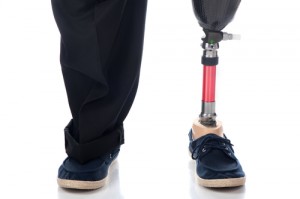 African-American people have three times more probability of having a leg amputated as a consequence of diabetes and circulatory problems, as well as less probability of getting routine preventive health care, than patients from other ethnicities. This revelation comes from a study from the Dartmouth Atlas Project, which revealed significant discrepancies not only between races but also regions regarding healthcare provided to Medicare beneficiaries suffering from diabetes.
African-American people have three times more probability of having a leg amputated as a consequence of diabetes and circulatory problems, as well as less probability of getting routine preventive health care, than patients from other ethnicities. This revelation comes from a study from the Dartmouth Atlas Project, which revealed significant discrepancies not only between races but also regions regarding healthcare provided to Medicare beneficiaries suffering from diabetes.
The rates of amputations are very different across each U.S. region and among Medicare patients suffering from diabetes and peripheral arterial disease (PAD), as reported in the study. Black patients in the rural Southeast region are who receive the highest number of amputations in the country. Moreover, the rate of amputations on black patients is seven times higher in certain regions of the country than others.
“This report leaves little doubt where the focus of amputation prevention needs to be directed,” stated the director of the Center for the Evaluation of Surgical Care at the Dartmouth Hitchcock Center, Philip Goodney, who co-authored the report in collaboration with David Goodman, principal investigator of the Dartmouth Atlas, and other experts. “While a comprehensive approach is necessary, focusing on black patients in poor, rural regions of the United States is likely to be the best place to start. We must look for opportunities to expand education and preventive care for all patients at risk for amputation. However, initiating broader efforts in these high-risk communities will be essential to have the greatest impact.”
The average rate in the United States for leg amputations was 2.4 per 1,000 Medicare beneficiaries suffering from diabetes and PAD. However, the rate differed more than fivefold across regions, the highest rates being in Tupelo, Mississippi and the lowest in Royal Oak, Michigan and Sarasota, Florida. Among black patients, the number is 5.6 per 1,000 beneficiaries, which is almost three times higher than the average. The greater racial disparities were also verified in Tupelo, where there was 16.1 amputations for 1,000 black patients, and 3.8 for non-black patients.
“It is imperative that we elevate our health care to meet the needs of diverse patients,” said Marshall Chin, the director of Finding Answers: Disparities Research for Change, a national program from the Robert Wood Johnson Foundation, dedicated to reduce disparities. “Eliminating disparities like those illuminated in this report will require health care professionals to go beyond the walls of traditional health institutions to facilitate healthy communities.”
Providing health care to patients who suffer from both diabetes and PDA is not an easy task, and it often results in the need to amputate a leg, due to wounds on the feet and poor circulation. This why disease prevention is so emphasized, including circulation, foot health, cholesterol and blood sugar control. Even though blood sugar and cholesterol exams are not expensive and widely available, the report also concluded that more non-black patients (81.5%) were receiving these kinds of preventive exams than black patients (75.2%).
In addition, patients who already have wounds and ulcerations may also be treated with surgery to improve the blood flow to their feet, as well as endovascular treatments like balloons or stents, or open surgical procedures like bypass surgery. In the case of these procedures, there are also regional discrepancies, as only 4.8 per 1,000 receive them in Columbus, Georgia and 33.5 in Petoskey, Michigan.
The report, “Variation in the Care of Surgical Conditions: Diabetes and Peripheral Arterial Disease” is the third of six studies conducted by the Dartmouth Atlas of Health Care, in order to evaluate the discrepancies of the surgical care among Medicare beneficiaries. The first ones regard obesity and cerebral aneurysms, this one focused on data about diabetes between 2007 and 2011.


